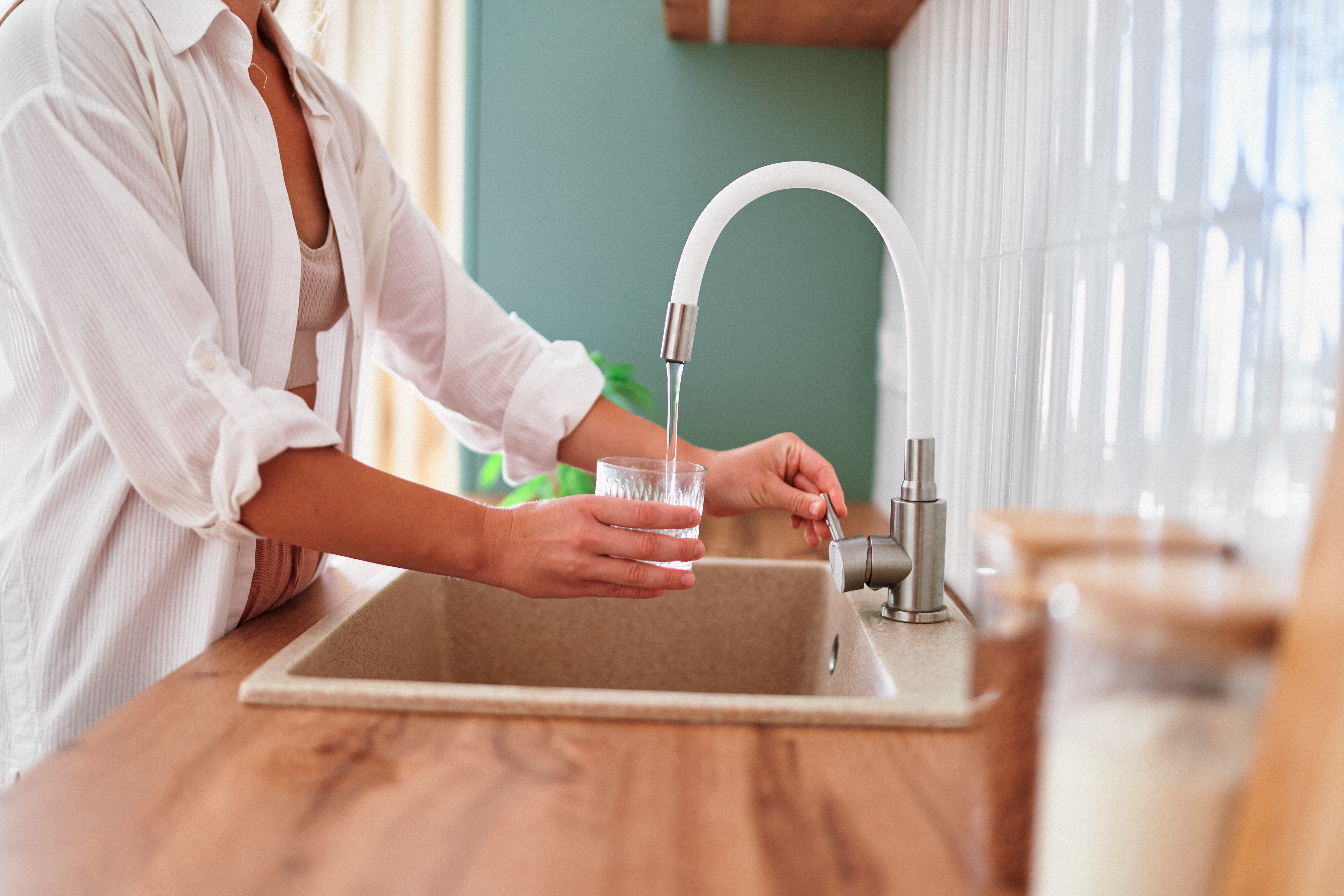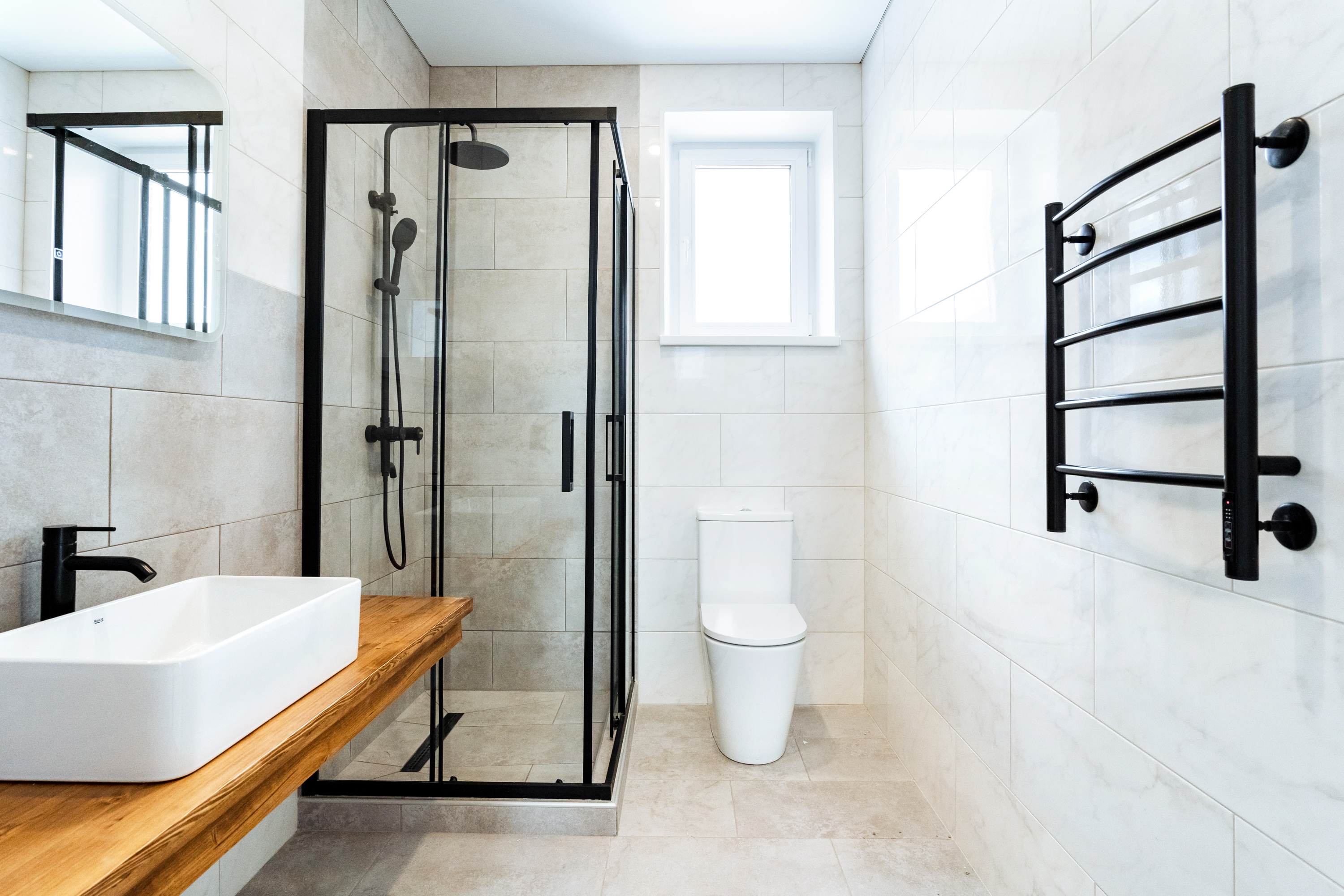
Discover what impacts main water line repair costs in Los Angeles, such as soil conditions and permits, so you can confidently plan your project.
It’s time to drop your drop-in cleaner


Drop-in toilet cleaners are chlorine-based cleaning tablets that you drop into your toilet tank.
Drop-in toilet cleaners can corrode your toilet part and reduce its functionality.
The ideal way to clean your toilet is by hand, with a non-abrasive cleaner or baking soda and vinegar.
While it may be tempting to go the easiest route when cleaning your toilet (because let’s be honest, who enjoys it?), it may be worthwhile to put in a little more effort. Drop-in toilet bowl cleaners may cause damage to your toilet and, over time, cause you to pay a significant price for the repairs.
To reduce the chance of having to deal with a malfunctioning toilet, consider changing up your toilet cleaning method.
Drop-in toilet cleaners are often bleach- or chlorine-based tablets that you drop right into the toilet tank. Essentially, the aim of these toilet tablets is to help you maintain a clean toilet bowl and tank for as long as possible.
Considering the not-so-enjoyable nature of cleaning a toilet, it’s no surprise that many homeowners may opt for drop-in toilet cleaners, which don’t require any elbow grease and seem to put the cleaning on autopilot.
As great as they may seem, these drop-in tablets can cause damage to your toilet in a few ways. Additionally, many leading brands have a sticker inside the tank saying that the warranty is void if these toilet bowl tablets are used.
When you drop a chlorine tablet into your toilet tank, it dissolves and then interacts with the plastic and rubber toilet components—which can deform, become brittle, or otherwise fail prematurely. Toilet components that interact with the dissolving tablet include gaskets, washers, and flappers.
When the tablet releases the chlorine, it can slowly begin to break down these parts, likely leading to a malfunctioning toilet later on.
“Some brands like Toto recommend Bon Ami or Barkeeper's Friend because they're very gentle, but due to the modern glazing techniques, it’s unlikely you'd need much more than a rag and something like glass cleaner,” says Joseph Wood, Expert Review Board member, Master Plumber, and Founder of Boston Standard Company. “Be careful not to damage the factory glazing with abrasive cleaners.”
Over time, your toilet may begin to leak as a result of how the tablet wears down the various toilet components. Then, you’ll likely find yourself looking at some potentially high toilet repair costs—you and your wallet will not be pleased.
“One of the worst parts of these leaks is that they're internal to the toilet, so they can go undetected for long periods and result in very high water and sewer bills,” says Wood.
When the chlorine tablet erodes the flushing valve over time, your toilet may not flush correctly, and it may even lose all flushing functionality. Additionally, using drop-in toilet cleaner tablets can cause clogs, as pieces of the tablets can break off and get stuck in the pipes.
These tablets can also get stuck in the flush valve, damaging the flushing function. If this happens, you’ll need to contact a local plumber to fix the issue.
If you have a septic tank system, then bleach- or chlorine-based toilet bowl cleaners can potentially kill the live bacteria in your system that break down waste. Your system can back up, resulting in expensive repairs. Other chemicals to avoid include sulfamic acid, sodium hypochlorite, hydrogen chloride, or antibacterial agents. Using baking soda and vinegar is a safer choice for cleaning your toilet bowl.
Although this may not leave you jumping for joy, the ideal way to clean your toilet is by hand. To effectively clean your toilet bowl, use the instructions on your favorite store-bought bowl cleaner or scrub the bowl with vinegar and baking soda. If you want to give your toilet tank a good cleaning every once in a while, you can also use those handy household ingredients.
Keep in mind that cleaning your toilet isn’t a one-size-fits-all situation. There are plenty of tricks and methods you can use to get your toilet sparkling. For instance, to give your toilet a little extra love, you can apply an all-purpose cleaner to an old toothbrush and scrub any hardened debris that’s gotten into hard-to-reach areas. Happy scrubbing!
I recently used Concierge Home Remodeling for a bathroom renovation and I couldn't be happier with the results. Tom and his team was professional, and efficient and the final product exceeded my expectations. I would highly recommend their services to anyone looking for a quality bathroom...
Services: Plumbing pipe repair, Installation, Plumbing leak detection Critical: Professionalism, Punctuality, Responsiveness Conway repaired my frozen inside and outside pipes in January. The work was done in a timely manor, however I have not been able to get all of the documentation that I...
Hired Moe Plumbing to do HVAC maintenance. Two workers arrived and said all was okay. They seemed hurried. One week later this same HVAC system broke during record heat. Moe was "too busy" to come for another week. After 4 days of suffering, called another company who came within two hours...
I was extremely impressed from the beginning to the end. Each phase began with a crew that was punctual and professional in all ways. Skyline has a very talented team that provide exceptional demolition, plumbing, electrical, cabinetry, and painting services, all of which were required in my...
Remodeling, carpentry, doors, siding, drywall, tile, paint. His electric and plumbing subs were very professional. I would use him again.
I originally found Santa Monica Plumbing with the BBB where they has a AAA rating. It was borne out by the service they provided. I have used them three times. First, I had a leaky faucet in the bathroom and needed my washer drain snaked out. The washer drain was particularly challenging...
From average costs to expert advice, get all the answers you need to get your job done.

Discover what impacts main water line repair costs in Los Angeles, such as soil conditions and permits, so you can confidently plan your project.

Replacing a water main in Los Angeles is expensive, but certainly not the nation’s highest—or even California’s. Living in the Hills or on the coast can affect the total cost.

How much does a plumber cost in Los Angeles? Learn what impacts plumbing costs in the City of Angels and how to hire the best plumber in LA for your project.

The water main line is essential to your home’s plumbing. Over time, it can develop wear or damage. Find out how much a main water line replacement costs here.

Copper is prone to leaks from corrosion, particularly pinhole leaks. This guide will show you how to fix a copper pipe leak in seven different ways.

Need to create a residential plumbing design layout but don’t know where to start? Learn essential plumbing components to create the perfect layout for your home.